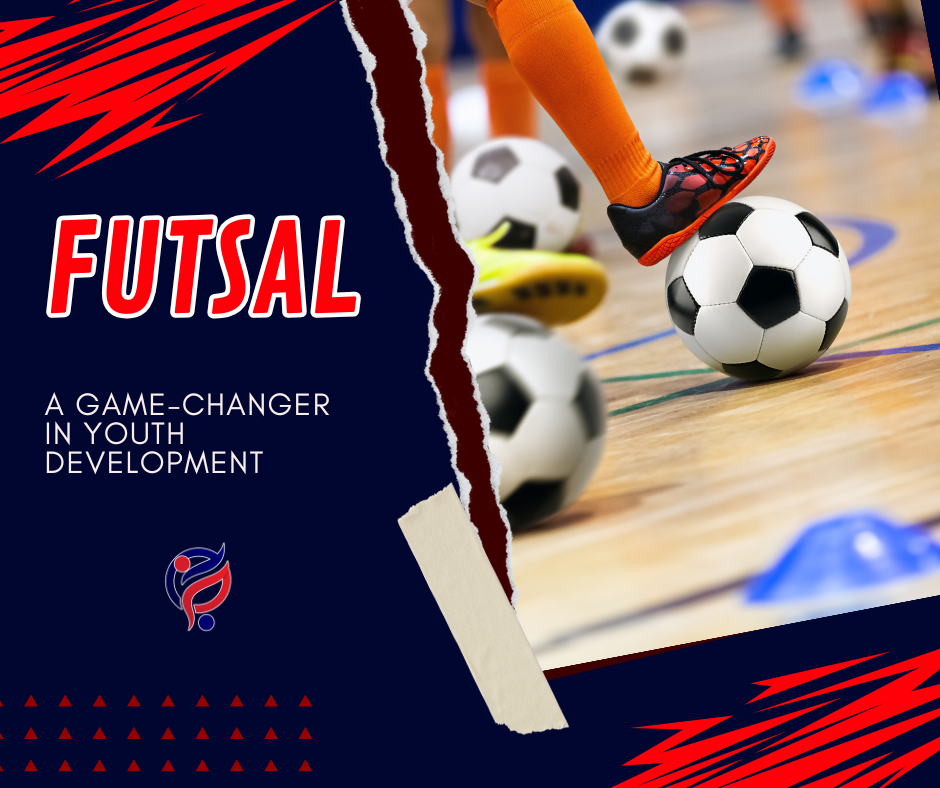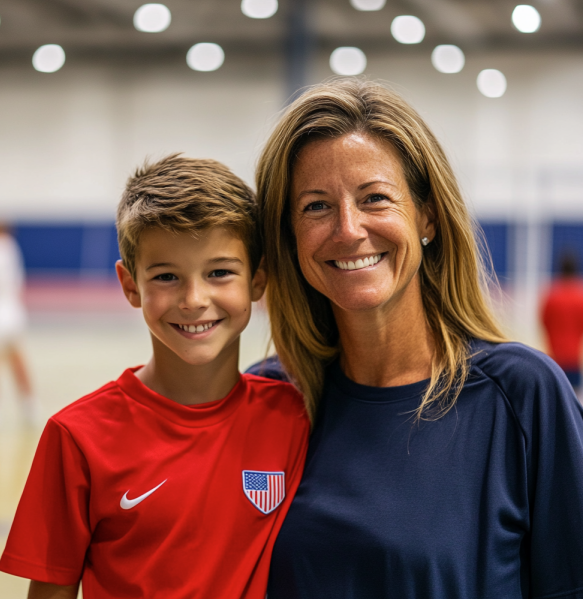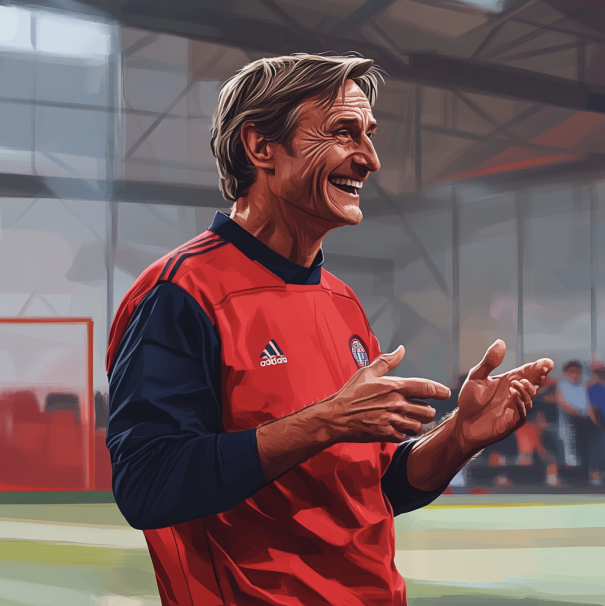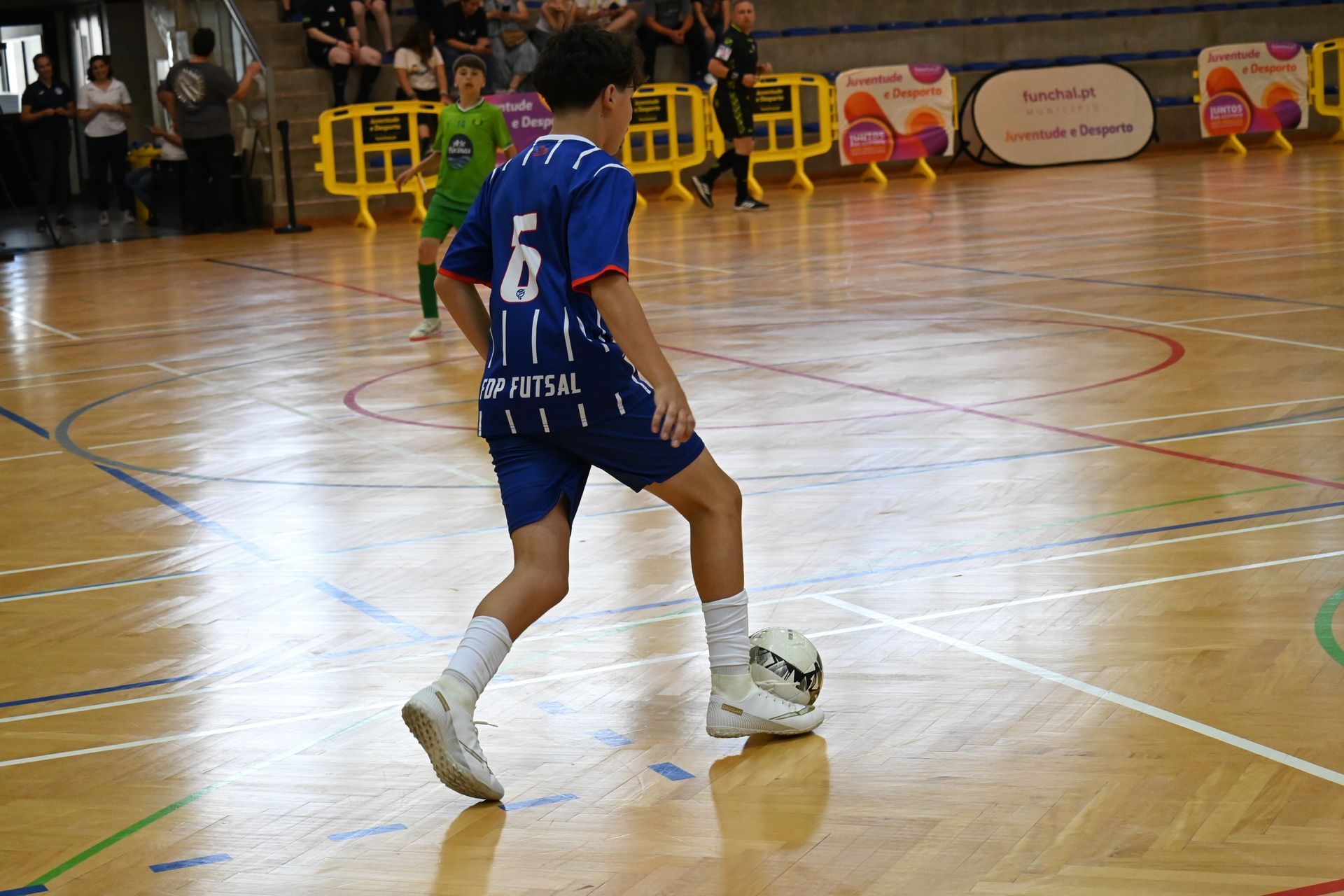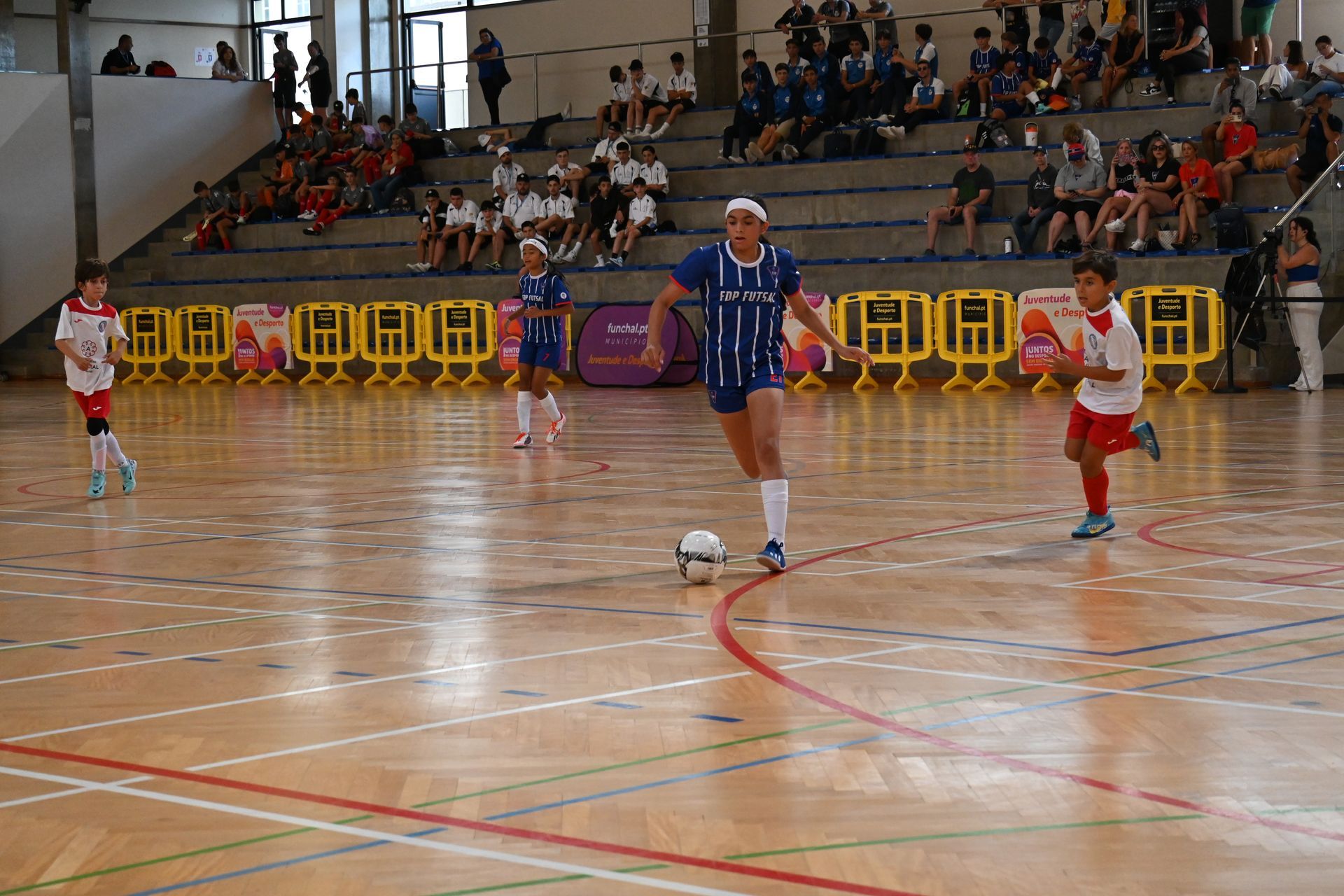Developing Vertical Play in Futsal Using a Pivo (Striker)
Developing Vertical Play in Futsal Using a Pivo (Striker)

Futsal, a fast-paced variation of soccer played on a smaller court, offers unique opportunities for players to develop crucial skills, especially when it comes to vertical play. One of the key positions in futsal is the "pivo" (striker), whose role is pivotal in stretching the play vertically. This article explores how futsal nurtures vertical play through the use of a pivo, and the significance of stretching the futsal court, which has parallels to stretching a soccer field both horizontally and vertically.
The Role of the Pivo in Futsal
In futsal, the pivo is akin to a target man in soccer. Positioned at the forefront of the attack, the pivo is crucial for receiving passes, holding up play, and creating scoring opportunities. Their presence forces the opposition to stretch their defense, creating spaces for teammates to exploit.
Key Responsibilities of the Pivo:
- Holding Up Play: The pivo must have excellent ball control to hold up play, allowing teammates to advance and support.
- Creating Space: By positioning themselves effectively, the pivo can pull defenders out of position, creating gaps in the defense.
- Facilitating Vertical Play: The pivo acts as a focal point for vertical passes, enabling quick transitions from defense to attack.
Stretching the Futsal Court
One of the most significant tactics in futsal is to stretch the playing area. This is achieved by making full use of the width and length of the court, similar to how soccer teams stretch the field horizontally and vertically.
Importance of Stretching the Court:
- Creating Space: Stretching the court horizontally and vertically opens up space, making it harder for the opposition to maintain a compact defense.
- Enhancing Attacking Options: With more space, attackers have greater opportunities for 1v1 situations, passing lanes, and off-the-ball movements.
- Facilitating Quick Transitions: Vertical play is facilitated when the court is stretched, allowing for rapid attacks that catch the defense off guard.
Challenges Faced by Youth Players
Youth soccer players often tend to gravitate towards the middle of the field or court, unintentionally reducing the effective playing area. This congestion makes it difficult for the pivo to find space and limits attacking options.
Common Issues:
- Limited Space for Striker: Congestion in the middle restricts the pivo’s ability to receive the ball and take on defenders.
- Reduced Passing Lanes: Fewer attacking lanes are available, making it harder to progress the ball vertically.
- Difficulty in Creating 1v1 Scenarios: Without space, the pivo and other attackers struggle to isolate defenders and create goal-scoring opportunities.
Emphasizing Vertical Play
The philosophy of vertical play, as emphasized by coaches like Pep Guardiola, prioritizes quick transitions and purposeful possession. While "tiki-taka" involves short passes and maintaining possession, true vertical play looks to exploit any available forward option immediately.
Guardiola’s Philosophy:
- Quick Transitions: Upon winning possession, the first look is always towards the striker, aiming to exploit the fastest route to goal.
- Stretching the Defense: Utilizing the full width of the pitch helps to pull apart the opposition’s defensive shape, creating central spaces to exploit.
- Purposeful Possession: Possession is maintained with the intent to find a vertical pass that can break the lines and create scoring chances.
Principles of Positional Play
Positional play, a tactical theory used by masters like Johan Cruyff and Pep Guardiola, includes several principles that support vertical play:
- Playing Out from the Back: Building attacks from the defense to create space.
- Control of Possession: Maintaining the ball with the purpose of finding vertical options.
- Positioning and Movement: Players constantly move and position themselves to create and exploit spaces.
- Compactness: Keeping the team compact when defending and expanding when attacking.
- Exploiting Half-Spaces: Using the areas between the full-backs and center-backs to create opportunities.
- Combination Play: Quick, short passes to break down defenses.
- Counter-Pressing: Immediate pressure after losing possession to regain the ball quickly.
- Vertical Play: Prioritizing forward passes and quick transitions.
- Overload to Isolate: Creating numerical superiority in one area to isolate players in another.
- Attacking Lanes: Utilizing wide players to stretch the defense and create channels for vertical passes.
Practical Applications in Training
To effectively develop vertical play and utilize the pivo in futsal, coaches can incorporate specific drills and strategies into their training sessions. Here are a few practical applications:
Drills for Developing Vertical Play
- Positional Rotation Drills:
- Objective: Enhance players' understanding of positional play and movement.
- Setup: Divide the court into zones and assign players to different positions. Use markers or cones to simulate the positions of pivo, wingers, and midfielders.
- Execution: Players rotate positions after a set number of passes or upon receiving the ball, focusing on quick transitions and finding the pivo with vertical passes.
- Small-Sided Games:
- Objective: Encourage vertical play in a game-like setting.
- Setup: Play 3v3 or 4v4 games on a reduced-size court to simulate high-pressure situations.
- Execution: Emphasize quick passing and movement, encouraging players to look for the pivo immediately upon winning possession. Award points for successful vertical passes leading to goals.
- 1v1 Attacking Drills:
- Objective: Improve the pivo's ability to take on defenders and create space.
- Setup: Create a small area where the pivo faces a defender in a 1v1 scenario, with a goal or target to aim for.
- Execution: The pivo receives the ball and attempts to beat the defender to score or lay off to a supporting teammate. Rotate players to experience both attacking and defending roles.
Tactical Strategies
- Width Utilization:
- Objective: Stretch the opponent’s defense by using the full width of the court.
- Implementation: Instruct wide players to stay close to the touchlines, pulling defenders out wide and creating central spaces for the pivo and other attackers to exploit.
- Quick Transitions:
- Objective: Transition rapidly from defense to attack, catching the opposition off guard.
- Implementation: Train players to immediately look for the pivo upon winning possession, reducing unnecessary lateral passes and focusing on vertical progression.
- Overload to Isolate:
- Objective: Create numerical advantages in certain areas to isolate the pivo or other attackers in 1v1 situations.
- Implementation: Use combination play and coordinated movement to overload one side of the court, then switch play quickly to exploit the isolated attacker on the opposite side.
Monitoring and Adjusting Tactics
Regularly monitoring player performance and team dynamics is essential to ensure the effectiveness of these strategies. Coaches should use video analysis and feedback sessions to highlight successful executions of vertical play and identify areas for improvement.
Adapting to Opponents
Adapting tactics based on the opposition is also crucial. Some teams may defend deep, requiring patience and precise passing to create openings. Others may press high, offering opportunities for quick vertical transitions. Understanding and anticipating the opponent’s strategy allows for more effective implementation of vertical play principles.
The Broader Impact on Soccer
The principles of vertical play in futsal have a direct correlation with soccer. Players trained in futsal often develop superior ball control, quick decision-making, and spatial awareness, which are invaluable on the larger soccer field.
Transferring Skills to Soccer
- Ball Control and Quick Passing: The confined space of a futsal court demands excellent ball control and quick passing, skills that translate well to soccer.
- Spatial Awareness: Futsal players learn to navigate tight spaces, enhancing their ability to find and exploit gaps on a soccer field.
- Decision Making: The fast pace of futsal accelerates decision-making processes, helping players make quicker and more effective decisions in soccer.
Stretching the Soccer Field
Just as in futsal, stretching the soccer field both horizontally and vertically is essential. Wide players and quick transitions are crucial in breaking down organized defenses. By employing similar tactics, soccer teams can create more scoring opportunities and enhance their overall play.
Futsal’s focus on vertical play and the strategic use of a pivo provides an excellent foundation for developing essential soccer skills. By understanding the importance of stretching the court and prioritizing quick, purposeful transitions, players can enhance their performance in both futsal and soccer. Coaches play a vital role in reinforcing these principles through targeted drills and tactical strategies, ensuring that players are well-equipped to excel in dynamic, high-pressure environments. Ultimately, the integration of futsal’s vertical play philosophy into soccer training can lead to more effective and exciting play, benefiting players at all levels.
Contributed By Niko Alexopoulos
DON'T MISS ANY BLOG POSTS
Unlock Exclusive Insights: Subscribe Now & Stay Ahead of the Curve! Don't Miss a Single Blog Post—Join Our Community for Expert Tips, Fresh Perspectives, and Insider Knowledge. Your Ticket to Stay Informed, Inspired, and Empowered Awaits!
MAXIMIZE YOUR POTENTIAL
Empower Your Journey: Subscribe for Exclusive Access to Training, Programs, Camps, and Events. Elevate Your Skills and Seize Every Opportunity!

